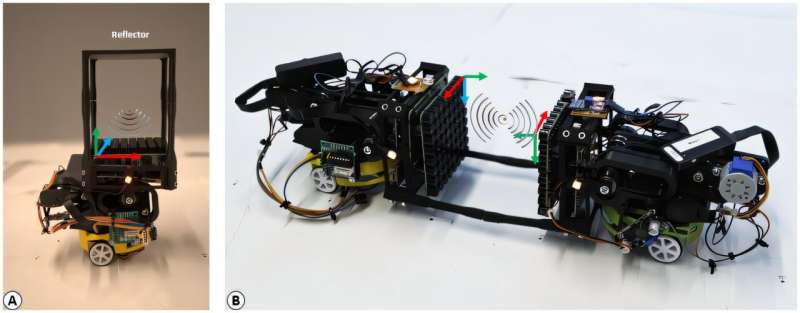![(A)-(B) An independent object transport and a cooperative object transport in ant colonies (contact object transport) [4], (C)-(D) An independent object transport and a cooperative object transport in swarm robotics (contact object transport) [5], (E)-(F) Proposed independent and cooperative contactless object transport in the air with acoustic robots (contactless object transport). Credit: Kemsaram et al. A new system that allows acoustic robots to co-operatively transport objects](https://trendsturds.com/wp-content/uploads/2025/07/a-new-system-that-allo.jpg)
Traditionally, robots have been used one at a time, but when they work together, they can handle much more complex tasks quickly and efficiently. For example, they could be employed to swiftly move objects across various terrains, including places that are hard for humans to reach.
A team at University College London (UCL) has created an innovative system that enables robots to work together to transport items using sound waves that are inaudible to us. This method, detailed in a research paper on the arXiv preprint server, draws inspiration from how ants and certain insects coordinate to carry food and other small objects back to their nests.
“Cooperative transport, where multiple agents move an object at the same time, is something we’ve seen frequently in nature, like in ant colonies, where it boosts efficiency in changing environments,” mentioned Narsimlu Kemsaram, Akin Delibasi, and their team in their paper. “Taking cues from these natural behaviors, we’ve developed a unique acoustic robotic system designed for contactless object transport in mid-air.”
Kemsaram, Delibasi, and their colleagues designed a system for robotic teamwork in moving objects, utilizing ultrasonic transducers—small devices that generate sound waves—and a control system onboard the robots. These tiny ultrasound emitters create specific sound patterns in the air, forming pressure fields capable of holding small objects suspended in the air.

These pressure fields can trap and levitate small objects in mid-air. The robotic control system specifically directs where these sound fields are created, allowing for precise manipulation of the levitated items.
“Our setup uses phased ultrasonic transducers alongside a robotic control system to generate specific acoustic pressure zones, enabling careful handling of airborne items and robots,” Kemsaram, Delibasi, and their team explained. “We group the object transport methods into two types: uncoordinated (independent) and coordinated (forward-facing cooperative), drawing on nature to enhance efficiency.”
The researchers developed two different transport methods: one where robots operate alone and another that encourages them to collaborate, mimicking insect behavior in swarms. They tested both methods in real-world environments using prototypes of their acoustic robots.
“We validated our system by measuring levitation stability with a microphone in the lab, reviewing transport efficiency through motion capture technology, and examining synchronization accuracy with an oscilloscope,” noted Kemsaram, Delibasi, and their team. “The results show that both independent and cooperative airborne transport of objects is practical.”
In the future, their system could undergo more extensive testing to evaluate its effectiveness in real-world challenges. It has promising applications for efficiently moving materials, aiding in the assembly of devices, and might even find uses in biomedical fields.
Written for you by our author Ingrid Fadelli, edited by Gaby Clark, and fact-checked by Robert Egan — this article comes from diligent human effort. We depend on readers like you to sustain independent science journalism. If you find this reporting important, please consider a donation (especially monthly). You’ll receive an ad-free account as a thank-you.
More information:
Narsimlu Kemsaram et al, A Cooperative Contactless Object Transport with Acoustic Robots, arXiv (2025). DOI: 10.48550/arxiv.2506.13957
If you would like to see similar Tech posts like this, click here & share this article with your friends!

